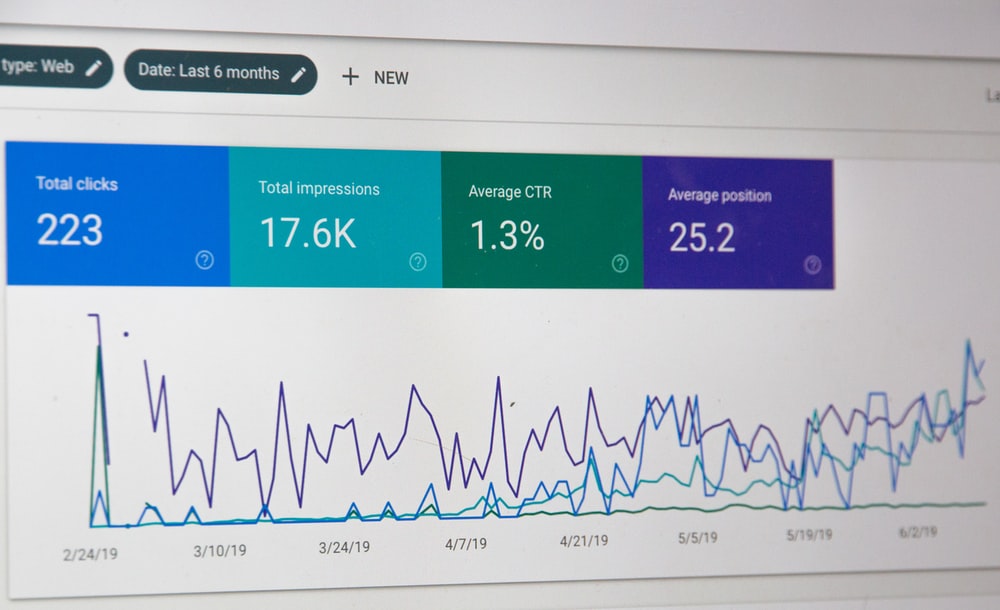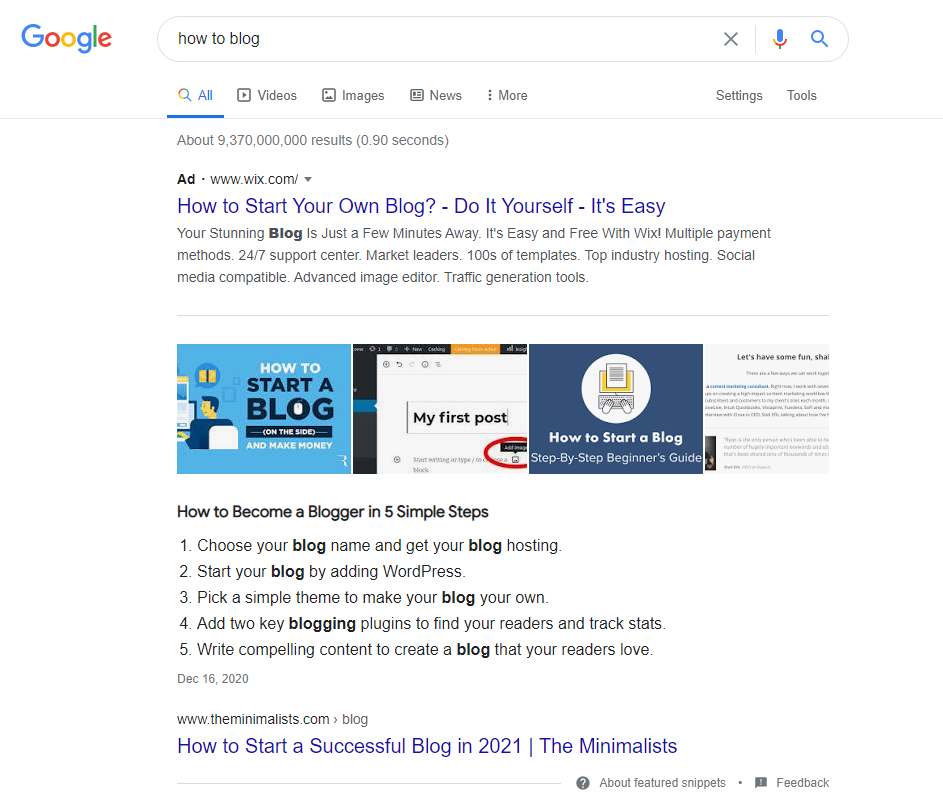

A featured snippet is a block that contains the exact answer to your queryon search engine results pages (SERPs). SEO snippets are usually positioned at the top of SERPs below the paid ads and above other organic search results.
Find below a screenshot of a featured snippet for a google search on “how to blog.”


Usually, Google includes images in a featured snippet.However, the image source can be different than the source of the answer.
If you are looking for web design, remember that SEO snippets make people’s online search easier since they can see the answer they are looking for at a glance. Google programmatically picks the best response from a third-party website and features it in a snippet.If Google displays your content as a featured snippet, you can get a lot of exposure and leads through rich snippets.
While working on your web designs or web development, remember that there’s no official recommendation from Google about improving your chances to get google featured snippets. Still, a few patents and experiments shed some light on what web publishers should be doing to rank their pages in featured snippets.
Keyword research is acrucial tool for successful content, especially one that ranks for a featured snippet. So, make sure to answer questions that most of your target audience and customers ask.
There are several keyword research tools to help you with this. If you use KWFinder, you can type in a seed keyword and click the tab “Questions.”
You can also use Ubersuggest’s Free Keyword Tool for the same purpose.
While researching keywords is extremely helpful, don’t forget to check out the “People also ask” section. Many times, you will find this section beneath a featured snippet.
Moreover, if you click on a question, more and more questions appear. It will offer you more opportunities to expand on a topic, and you will be able to answer as many questions as possible in a single blog post.
Getting on page 1 gives you a chance to be featured in a rich snippet. Nearly all SEO snippets are found on the first page of Google SERPs.
This only goes to show that increasing your organic rankings remains to be a solid practice.
It would help if you also revisited strategies on how to improve your on-page SEO while providing a great user experience:
The Inverted (or Inverse) Pyramid is a journalism concept that teaches us how to structure the information. Start by answering “the most awaited part” and then proceed with the supporting details for the rest of your content.Dr. Peter J. Meyers of Moz believes that the inverted pyramid is a legitimate and smart technique to land featured snippets.
You can also go through a study by the STAT Search Analytics team: The Best Words and Themes to Generate Featured Snippets.
Their study revealed queries regarding snippets:
The results also revealed words that were less likely to rank in the snippets. You might consider removing them or minimizing their usage:
You should structure your content depending on the snippet format you want to show up for.
If you want to target a richsnippet, make sure the items are well-structured in a list, paragraph, or headings.
Here’s how you can format your blog post for rich snippets:
SEMrush analyzed over 1 million domains and 10 million keywords and had a useful discovery: Most SEO snippets have a length of 40-50 words. Hubspot mentions up to 58 words.
You can stay on the safe side for rich snippets by keeping your answers precise and to-the-point.
Q&A pages are beneficial to site owners who offer products or services. These pages demonstrate your expertise by addressing concerns. They also offer more opportunities for showing up in a snippet.
When creating a Q&A page, show the facts that most people in your niche desire to know. Provide complete answers in short paragraphs, but keep them to-the-point.
If you want to improve your site’s SEO by getting better traffic, you should know that occupying the first position of Google search results isn’t the only solution – ranking in featured snippets gives you a second chance.
Here’s a recap of the strategies you read above:
This article was kindly contributed by the team at Web Integrations, a website design and development company in Dundee.
2025 will soon be here, and for most people in the world of online businesses,… Read More
As the frequency of data breaches and identity thefts increases, protecting sensitive information is the… Read More
In the manufacturing industry, maintaining equipment and facilities is critical for smooth operations. Yet, many… Read More
Apple iPhone 16 is faster than its predecessor but how fast? Apple iPhone 16 lineup… Read More
In the ever-evolving landscape of digital marketing, guest posting services have emerged as a cornerstone… Read More
At makesseoweb.com, our approach to guest posting services is designed to maximize your SEO efforts… Read More